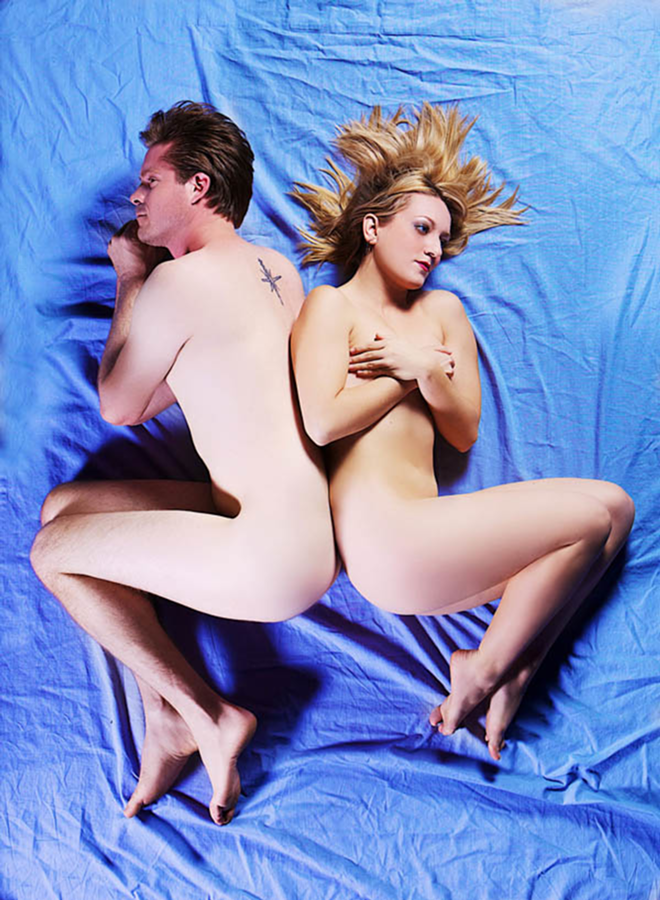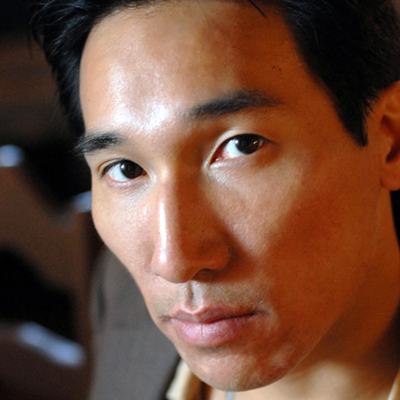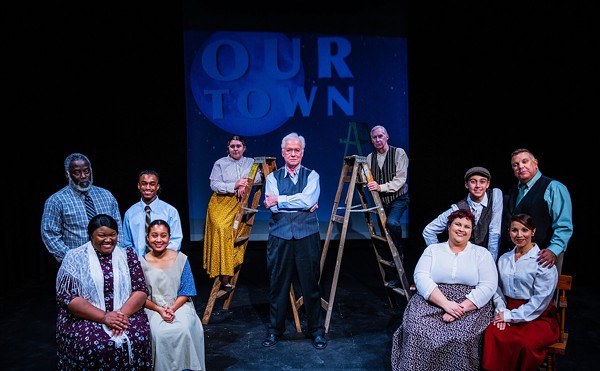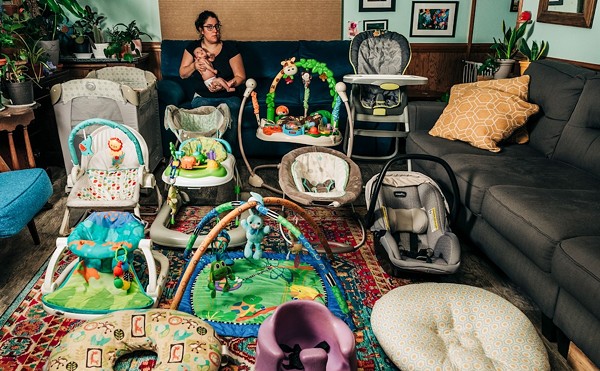
It's pretty hard to get excited about sex in the theater these days. After all, you can see just about any thinkable sex act (and a few others) on the Web, and as for realism, the movies make coitus between actors look a lot more convincing than it can be on the stage. As to sex between the classes, no one doubts that the rich and the poor regularly cohabit, or that desire transcends all sorts of barriers of wealth and status. Did millionaire John Edwards worry about Rielle Hunter's income? Was it difficult for Bill Clinton to break the ice with a mere intern? Every day in America, from the morning soaps to the evening news, we're surfeited with sex, real and imagined, high and low, straight and gay, licit and illicit. The average high schooler today knows more about the act than Freud ever dreamed.
This may explain why David Hare's The Blue Room, currently playing at Stageworks, comes so close to being boring. In this series of well-acted vignettes about foreplay and afterplay, we see a daisy chain of different couples talk their way into intercourse, each time followed by a blackout (during which a projection tells us how long the coupling took) and a brief post-coital chat. Since no one character is on stage long enough to win much of our attention, and since we know before it happens that every encounter will result in copulation, much of the ordinary suspense of drama is missing.
You might think that so many liaisons would eventually take on some deeper significance, but after 90 minutes and 10 hookups, only a few ideas present themselves: Sex is strong. People are needy. Women can be aggressive. Men can fail to perform. In other words, there's nothing more here than any modern adult knows. And if the work on which the play is based — Arthur Schitzler's La Ronde — was banned and shut down in Vienna, well, 1921 was a long time ago. You'll find more audacity (and dramatic satisfaction) on HBO.
The play begins with a prostitute offering herself to a cab driver, then shows the cab driver with an au pair, the au pair with a student, the student with a married woman, and so on and so forth until the last sketch, featuring an aristocrat with the original prostitute. As all the characters are played by the same two performers, we're able to observe, at the very least, how these fine actors — Alison Burns and Jim Sorensen — manage to transform from one sketch to the next. They're both terrific, it turns out — Sorensen is entirely convincing in each of his incarnations, and Burns is as persuasive as the conflicted au pair as she is as the neurotic married woman.
And there's a little drama most of the time to keep us from nodding off. For example, the student has to convince the married woman to go to bed with him in spite of the fact that she goes skiing with his parents. Or the married politician wants to turn the 17-year-old model into his mistress, but he's concerned about hygiene, and thus, about her other lovers.
Perhaps the most interesting scene features a playwright intent on seducing an actress who carries a statuette of a Madonna into their hotel room, and who's reluctant to submit even though she just spent 90 minutes nude on stage. ("That's different: it's easier on stage.") And speaking of nudity, both actors go au naturel for a few minutes, though the scenes in which they're partially clothed are usually more erotic.
All this sexplay takes place on Greg Bierce's fine set, featuring a comfortable-looking sofa/bed perched on a raised round wooden platform and backed by three long vertical banners. Karla Hartley's direction is excellent, though I don't understand the several moments when the actors deliberately step out of character. (Some sort of Brechtian alienation technique?) Hartley's also responsible for the abstract projections and pulsing rock rhythms that turn up between scenes. Frank Chavez's costumes, from outer- to underclothes, could hardly be better.
When it comes to sex, said John Updike, only too much is ever enough. Maybe that's why The Blue Room fails to be very interesting: We're awash with sex in this culture — it's everywhere we look. Even Edward Albee acknowledged this when he had a lead character screw a goat. That got some attention. At least for a few months
















